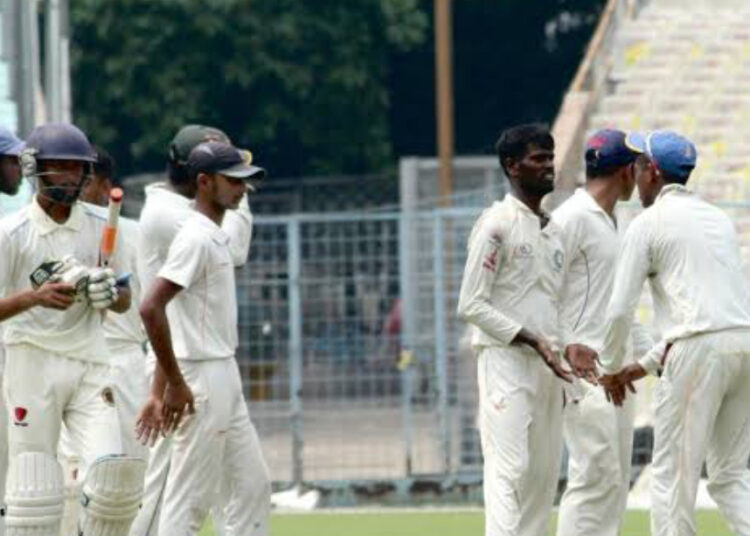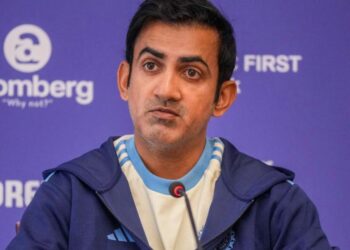Kolkata’s welcoming cricket environment has indeed turned it into a hub for many North Indian cricketers, who are aiming for a national call-up. With generous support from the local clubs under the Cricket Association of Bengal (CAB), these players receive not just financial stability but also residency, which is essential for pursuing cricket full-time. The city’s open-arm approach to players from different regions helps them feel at home and focus solely on their game.
Players like Mohammed Shami, Mukesh Kumar, Akash Deep, and Shahbaz Ahmed have become prominent examples of how Kolkata nurtures talent from across India. Shami, originally from Uttar Pradesh, found consistent support in Bengal that helped him develop into a national-level bowler. Mukesh Kumar and Akash Deep are further proof of this support, with both benefiting from CAB’s backing. It’s impressive that Kolkata has built a system that rewards talent without regional bias, creating an environment where cricket dreams thrive.
It’s understandable how this trend could be a concern for the growth of local Bengal talent. While the CAB open policy aims to provide a platform for aspiring cricketers from across India, it can indeed limit opportunities for home-grown players. The flexibility of four registrations and three out-station players in the playing XI has inadvertently led clubs to heavily rely on North Indian players to boost their competitiveness, which, in turn, sidelines many promising Bengali cricketers.
When big names like Mohun Bagan push the boundaries by promoting several out-station players, it can set a precedent that influences other clubs to follow suit. Clubs like Tapan Memorial and Kidderpore taking the approach of filling nearly the entire playing XI with non-Bengali players only compounds the issue. This trend could indeed pose a significant challenge for local talent trying to secure spots, develop their skills, and gain visibility on a larger platform.
Thankfully, clubs like East Bengal, Barisha and Kalighat, which focus on nurturing local players, are still holding onto that commitment to Bengali talent. However, as the situation stands, a balance may need to be struck by the CAB to ensure that Bengal’s cricketing ecosystem supports both the local players’ development and the inclusion of talented players from other regions. This way, Kolkata’s nurturing environment for cricketers remains inclusive without overshadowing the growth of home-grown talent.
This kind of situation can definitely fuel resentment and create an unhealthy atmosphere, especially among local players who feel their development is stunted by the influx of out-station talent. It’s particularly disheartening when coaches or club authorities, instead of nurturing local players and providing them with the right guidance, take a punitive approach just to prove a point. Such behaviour not only demoralises the player in question but also sends a message to others that their opportunities are limited despite their efforts.
When upcoming players, especially those who have dedicated years to Bengal cricket, see non-local players being prioritised, it can lead to frustration and a loss of confidence in the system. A coach from a top club choosing to publicly undermine a local player by highlighting the “reliability” of out-station players only deepens these divides and exacerbates resentment. A recent incident at the JC Mukherjee Trophy reveals a deeper issue of how biases and favouritism can affect young cricketers’ confidence and development.
When a promising Bengal player was dropped in favor of a non-local player by a top club coach, it fueled his frustration, especially if he felt his exclusion wasn’t based on performance but on a preference for out-station players. Publicly questioning the decision took courage, but it also placed the player under intense scrutiny, putting added pressure on him to perform when he was eventually given a chance. Unfortunately, the coach’s response after the player’s low performance only magnified the tension.
By publicly questioning the abilities of local players as a whole, the coach shifted the focus from a balanced assessment of individual performance to a divisive narrative that pits local talent against non-local recruits. This kind of public criticism can be damaging, not only to the individual player but also to the morale of Bengal players as a whole. To foster a more inclusive and positive environment, coaches and administrators might benefit from reassessing how they balance opportunities for local and out-station players.
Constructive support, especially for young players navigating high expectations, can lead to growth and resilience. Rather than casting broad judgments, a focus on nurturing individual talent could help build a powerful and competitive Bengal cricket culture. It’s encouraging to hear that CAB is aware of the growing concerns and is actively monitoring these developments. With the issue of local talent vs. out-station players becoming a prominent topic within Bengal’s cricket circles, proactive measures could indeed be key to preserving the region’s rich cricketing heritage and fostering new local stars.
The financial stability offered to club cricketers in Kolkata, similar to the support system in Chennai, is a valuable asset, but a focus on nurturing local talent is essential to Bengal’s cricketing future. The aspiration to see the next Sourav Ganguly rise from Bengal resonates strongly, and fostering an environment that encourages young players rather than discouraging them is vital for achieving that goal.
If certain coaches are not contributing positively to player development, sidelining them in favour of those who prioritise nurturing local talent and creating a balanced, fair environment should be the way forward. By ensuring that both local and non-local players feel supported without bias, Bengal cricket can maintain its reputation as a welcoming and competitive landscape while still championing its home-grown talents. This approach could bring Bengal one step closer to producing the next generation of iconic cricketers.
















